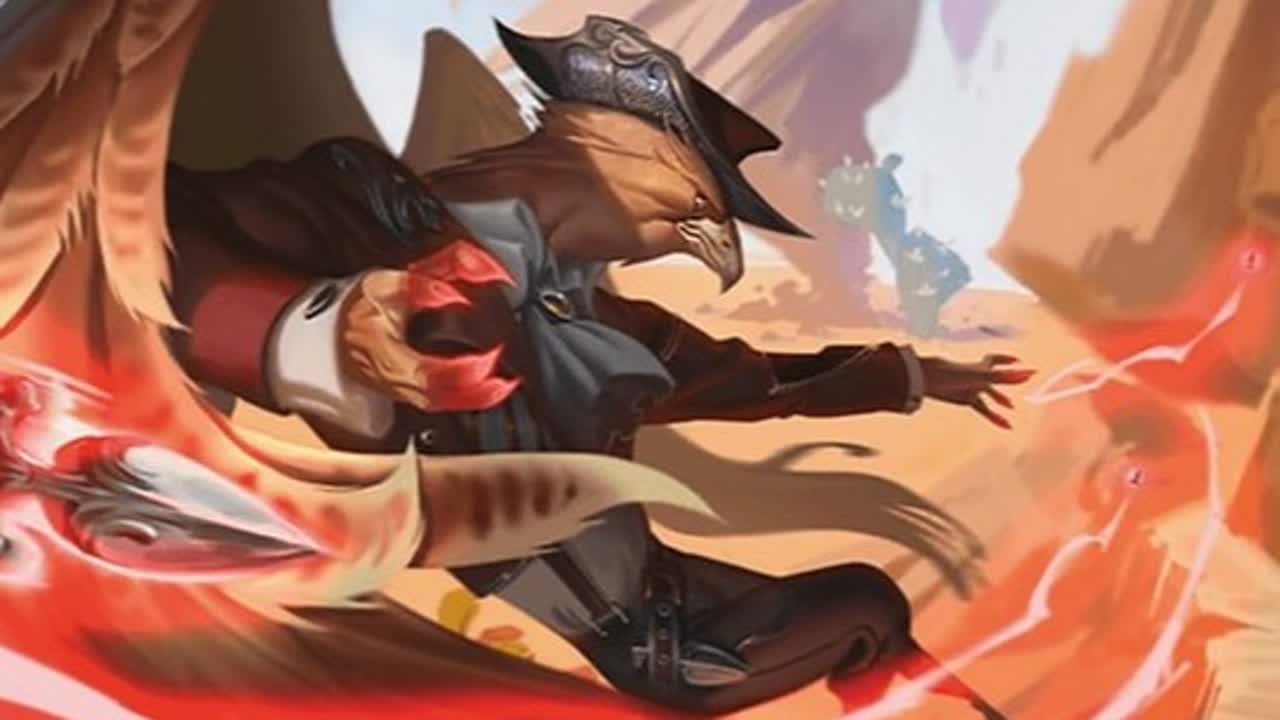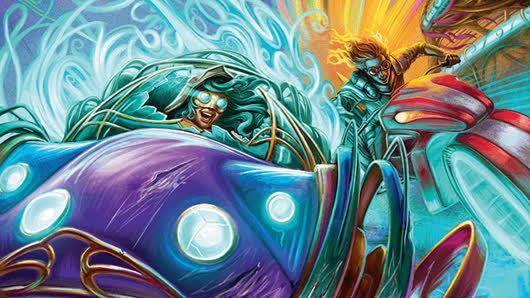Next month, just a few days after the release of Modern Horizons 3 and more precisely on June 15-16, MTG Arena will host an Explorer Qualifier Weekend. I recently started to test the format and today I'm here to present you one of the decks that most impressed me among the various I played. I'm talking about Gruul Prowess. The deck has become very popular in Pioneer and recently it's getting great results in MTGO challenges. Unfortunately Explorer and Pioneer are two slightly different formats and the absence of decks like Hidden Strings or Niv to Light greatly affects the power rankings of the other decks. Currently Gruul Prowess is the seventh most present deck in Pioneer and I can guarantee that the deck turns out to be very strong even in Explorer. After testing the deck in Bo3 events, I have an overall score of 12-3, which is not too bad considering how complicated Explorer is. The first feelings about the deck are very positive as no matchup bothered me too much. Now let's dive deep into the deck.
What’s the deck plan?
The deck aims to play cheap creatures that, in most of the cases, benefits from casting noncreature spells. In this specific case we are talking about pump spells and removal spells in order to get lethal really fast while also keeping some protections for our creatures. The scary part of the deck (for our opponent of course) is that it's not impossible to kill them on turn 3 or turn 4 but this isn't the only strength of the deck. While putting lethal pressure on them the deck can also invalidate opponent's gameplan. Not only this deck is able to to grow really big creatures but it can also protect them or outscale damage-based removal spells (really common spells in the format for red decks). Being fast is not always the most important thing for this deck as the presence of just 18 creatures in the deck forces us to want to be very cautious with them. In fact, even if we are talking about an aggressive deck, it is often advisable to avoid overextending or to tap out without the possibility of protecting our creatures. Once again, the deck is fast but it's not just fast.
Card Choices
The Creatures
Out of the 18 creatures, 16 are truly essential as so far I'm almost sure to cut the two copies of Picnic Ruiner (later I will explain why). Let's take a look at the function performed by each of these creatures.
Monastery Swiftspear is a cheap prowess creature that works very well within the archetype and it is definitely the best 1 drop available for the deck in terms of aggression. Moreover it should not be forgotten that it synergies very well with Kumano Faces Kakkazan. Why are them so good when combined together? Playing Kumano Faces Kakkazan on turn one while holding Monastery Swiftspear for turn two will ensure that we get the second chapter ability applied on it while also getting the chance of keeping one mana available for possible protection or pump spells.
Soul-Scar Mage is really similar to monastery Swiftspear but it's a slightly less aggressive card (as it doesn't have haste) while it's more oriented on dealing with big creatures due to his effect.
Slickshot Show-Off is the most evasive creature among the ones we play because of its flying ability. It hits harder than the other creatures and with plot it's also much easier to protect.
Questing Druid is the only spell in the deck to generate some real value with his adventure. The adventure part of the card is relevant for many reasons. First of all for two mana we get access to two more cards while also keeping Questing Druid itself as an option for later. Secondly, the opportunity to cast the adventure at instant speed ensures strong lines of play, enabling us to keep mana available to protect our creatures from enemy removals while also holding the chance of just playing the adventure itself. On top of that Questing Druid is a creature that can grow really fast because of all the cheap red spells in the deck.
The Removal Spells
Play with Fire is already decent removal spell for one mana but in this deck it can also be considered as a cheap way to temporarily pump our creatures. Don't forget we can also kill our opponent with it!
Witchstalker Frenzy is the only removal we have to deal with big creatures and it can easily become very cheap. Vein Ripper, Preacher of the Schism and the good old Sheoldred, the Apocalypse are all creatures that we need to remove as fast as possible and Witchstalker Frenzy does a decent job in doing that (well, not that decent with Vein Ripper) while also being a good option for other targets.
The Pump Spells
Blossoming Defense is not only a pump spell but most importantly it is a way for us to protect our creatures. Almost always we will use it to protect our creatures rather than to pump them.
Monstrous Rage on the other hand is a great pump spell with the upside of giving trample to target creature we control. Three damages on the spot and an additional monster role token for the following turns is a great deal for 1 mana.
The cards I didn’t like so far
Audacity can somehow be compared to Monstrous Rage although the cards have two big differences: audacity can only be played at sorcery speed but has the upside of a potential draw. Personally I consider the sorcery speed downside too big and I'm considering to cut from two to four copies of the card as it's pretty easy for the opponent to make a two for one whenever we play this card. Basically we can't play this card if the opponent has some mana available otherwise we take a risk the deck can't afford to take.
Picnic Ruiner's adventure has the same problem of Audacity leaving us with a two mana 2/2 with an effect that in my opinion is not good enough to justify his presence in the deck. Yes, it can do crazy things but it would require you to do sub-optimal actions before attacking and i don't like it.
Other possible inclusions in the maindeck
Talking about Royal Treatment i would consider adding either one or two copies of it. Its function would be the same of Blossoming Defense. To be honest sometimes I felt like i needed more protection spells and Royal Treatment might be a good protection spell for the deck.
Atarka's Command is a really flexible card and it really fits the deck. Out of the four option the second and the fourth ones are the most appealing for this type of deck but i wouldn't underestimate the first option as well against decks like Amalia Combo, Rakdos Vampires or Selesnya Angels. My suggestion would be to play one to three copies of the card.
Rampaging Ferocidon would be another good creature for the deck but Personally I would not include more than two copies of it as we need to keep a good balance among creatures and noncreatures spells in the deck. Amazing against decks that gain life (the same mentioned for Atarka's Command) and still good against creatures deck.
Rimrock Knight is similar to Picnic Ruiner but not only his adventure is at instant speed but it's also cheaper and this makes a huge difference. The body is worse and the adventure's effect is weaker as well but I feel like it fits more the playstyle of the deck. Paying 4 mana at sorcery speed is something the deck can't afford while one mana at instant speed is just perfect. The number of copies in this case i think really depends upon the rest of the deck: from one to four copies are all acceptable options. If I had to give a number I would say one.
Light up the Stage is similar to Questing Druid's adventure side. It doesn't have the restriction of having to play your cards by the end of your next end step but by the end of your next turn. On the other side it's a sorcery speed spell and can potentially cost three mana. Overall it would be a good inclusion as the deck lacks spells that are able to generate value. In this case I would not consider adding four copies of it and I think two copies are enough.
Demonic Ruckus is just an alternative to Audacity. I like neither of them as they share the same problems. I had to mention it but I would not consider to add it to my deck at this moment.
The Sideboard
Pick Your Poison is amazing against many decks with Rakdos Vampires being the most popular among them. Getting rid of Vein Ripper or Waste Not (and many more cards) for one mana is just an offer you can't refuse to take. Right now I'm playing three copies but I might consider to add the fourth one.
Magebane Lizard is a Pioneer card but I decided to try it in Explorer as well. It shines against Izzet phoenixes as they only have Lightning Axe to deal with it. I still think it's a much needed card in Pioneer than it is in Explorer and for this reason I might decide to cut some copies of it.
Rending Volley is great against Amalia Combo, Azorius Spirits, Ledger Shredder (You need to remove it as soon as possible), Mono White, Boros Heroic, Selesnya Angels and Greasefang.
There is not much to say about Redcap Melee: good against Mono Red, Gruul, Rakdos Sacrifice and decent against Quintorius Combo.
Conclusions
Playing the deck felt great to me and I would recommend you to try it. It's not an expensive deck, it's fun and quite fast to play. I don't necessarily think this is the strongest deck in the format but it's not far from that either. Maybe with some tweaks the deck can really aspire to become among the strongest 3-4 decks of the format. Remember to stick to the plan of the deck: don't overextend when not needed, keep some mana up for your protection spells and don't let your opponents make two for one trades.



























